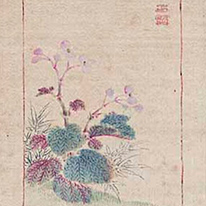Past Exhibitions
- Nanga Painters of the Late Edo Period
- February 21, 2017 - March 20, 2017
Throughout history, Japanese painting has been closely tied to the culture of China. The work of the Nanga painters, active in the 18th and 19th centuries, showed a particularly strong Chinese influence. The term Nanga, which means “Southern painting,” (in reference to Chinese Southern school painting) refers to Japanese literati painting (also called bunjinga). Many Japanese literati painters developed their own unique styles based on the techniques of Chinese Suzhou school painters active at the end of the Ming dynasty (1368–1661). These Nanga artists immersed themselves in the world of poetry and painting, and often produced works for the enjoyment of those in their own limited circles. The background behind the creation of these paintings and the ways in which they were used and appreciated have intriguing historical implications that broaden and enrich our understanding of the works and the intellectual world that they reflect.












